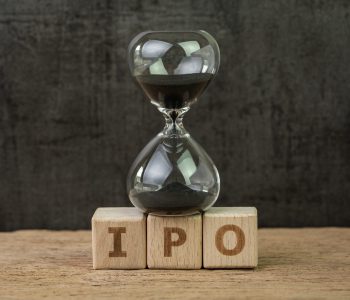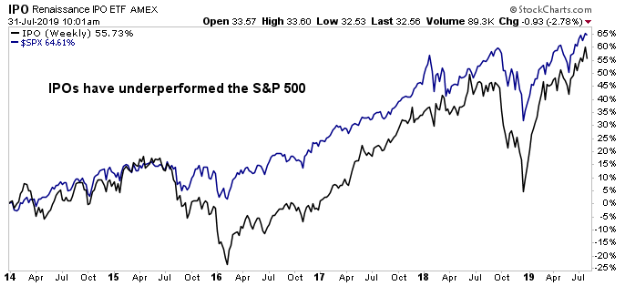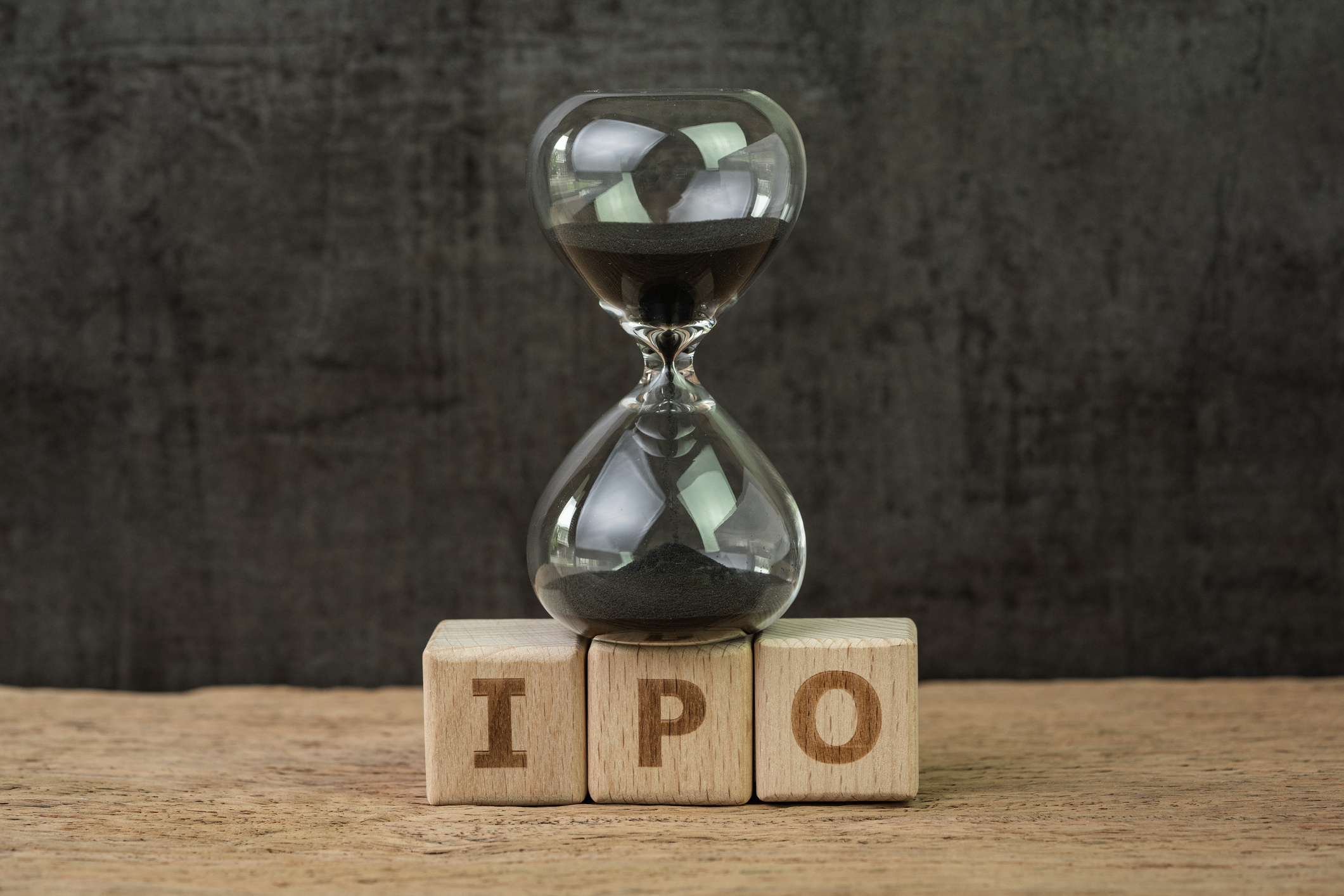Initial Public Offerings: The Shocking Truth About IPOs

Here’s What Wall Street Won’t Tell You About IPOs
Investors will remember 2019 as the year of the initial public offering (IPO) gold rush.
Dozens of high-profile companies have taken the plunge to list on public markets. including Pinterest Inc (NYSE:PINS), Uber Technologies Inc (NYSE:UBER), and Slack Technologies Inc (NYSE:WORK), just to name a few.
Analysts at market research firm Linklaters LLP estimate tech firms will issue $22.5 billion of new stock in 2019. That figure represents the most money raised by U.S. tech IPOs since the year 2000. (Source: “US tech IPOs on track for record year in money raised, reaching $17.1bn in 2019 H1,” Lexology, July 29, 2019.)
With so many rushing in to stake their claim, you might wonder: have people stuck the mother lode in these new companies? Maybe. I have no doubt a handful of lucky folks will hit it rich. But by and large, tech IPOs are more akin to investment fool’s gold than the next big strike.
Admittedly, that might sound like a bold statement. Who hasn’t heard stories of those who “got in on the ground floor” of great names like Apple Inc. (NASDAQ:AAPL) or Amazon.com, Inc. (NASDAQ:AMZN)? More recently, investors in the hot Beyond Meat Inc (NASDAQ:BYND) IPO collected a 950% profit in just a few months.
No doubt, some IPOs do make investors bundles of money. But our affinity of new issues is often a case of selective memory; we conveniently forget the duds. For each Apple, you can point to dozens of failed offerings: Groupon Inc (NASDAQ:GRPN), down 83% for its IPO price; Fitbit Inc (NYSE:FIT), down 78%; Blue Apron Holdings Inc (NYSE:APRN), down 94%; GoPro Inc (NASDAQ:GPRO), down 79%; and LendingClub Corp (NYSE:LC), down 80%; and more.
I didn’t cherry pick these examples, either. Professor Jay Ritter of the University of Florida reviewed the performance of IPOs between 1970 and 2010. He found that new issues underperformed the overall stock market by 4.8% in the first year, 8.1% through the second year, and 3.3% through the first five years. (Source: “Why IPOs underperform,” CBS News, November 15, 2012.)
More recently, the Renaissance IPO ETF (NYSEARCA:IPO), which owns a basket of stocks that have gone public in the last year, has posted disappointing results. Since 2014, the fund has delivered a total return, including dividends, of 54%. By comparison, the broader S&P 500 posted a gain of 65% over the same period.
Undoubtedly, IPO advocates will mention the benefits of strict selections. No one, they argue, should buy new issues as a group. Instead, you comb through new offerings and pick the companies with the best prospects. By separating the studs from the duds, you can earn outsized returns.
In practice, though, this strategy smacks right into a recurring problem in the IPO process: adverse selection. Retail investors can get as many shares of a lousy company as they want. But put in an order for a good initial public offering and you’ll the the issue “oversubscribed.” When a good issue hits the market, connected insiders (hedge funds, pension funds, mutual funds, etc.) often muscle out the public for the best deals.
Worse, top companies don’t even go public nowadays. Large institutions have stepped up their allocations to private equity and venture capital in recent years. That allows these investors to cherry pick the best opportunities pre-IPO.
But perhaps the biggest facing the IPO investor comes down to information. The founding shareholders have toiled in their businesses for years. They know more about the company’s products. They know more about the company’s customers. They know more about the company’s competitive position. And more importantly, they know where the bodies are buried. No analyst could ever hope to possess this type of information. And that, as you can probably figure out, puts you at a disadvantage.
You have likely experienced the same thing buying a used car. The casual buyer can kick the tires and perform a quick inspection. But the seller knows intimately how he drove and maintained the vehicle. That gives them a far deeper understanding of the car’s value and condition.
The IPO investor finds themselves in the same position. You have to be bold (or naive) to buy a stock at the very moment insiders have started unloading shares. Ask yourself: if I, a very informed person regarding this business, wants to get out, what is it that I know that makes me so confident to buy?

Chart courtesy of StockCharts.com
All of which begs the question: why bother with IPOs at all? Wall Street has stacked the deck against average investors. The smart strategy, therefore, would be to ignore this niche and take your money elsewhere.
“I don’t think it’s anything the average person should think about at all,” said Warren Buffett in a recent interview on the subject. “You can go around making dumb bets and win. . .It’s not something you want to take as a lifetime policy, though.” (Source: “On eve of Lyft’s much-hyped debut, Warren Buffett says regular investors shouldn’t buy hot IPOs,” CNBC, March 28, 2019.)
Where does Buffett put his money? Certainly not in IPOs, of which he has only participated in one during the course of his investment career. Instead, Buffett focuses on wonderful businesses with long track records that pay out boatloads of cash to their shareholders. These include Apple, Bank Of America Corp (NYSE:BAC), Wells Fargo & Co (NYSE:WFC), The Coca Cola Co (NYSE:KO), and American Express Company (NYSE:AXP)—in other words, the “beachfront properties” of the stock market. (Source: “Hedge Fund – Berkshire Hathaway,” Insider Monkey, last accessed July 31, 2019.)
I have advocated for the same approach. Income stocks, as I’ve mentioned time and time again, have crushed the broader market over decades. A recent study from Ned Davis Research showed a $100.00 investment in an equally weighted portfolio of dividend-paying companies grew to $5,277 between 1972 and 2018. Dividend growth stocks did even better, with the same investment growing to $7,499.
How have other investment categories performed? Not very well. For comparison, a $100.00 investment in a run-of-the-mill S&P 500 index fund would have increased to only $2,741 over the same period. Growth stocks, especially the hot companies that dominate the list of new issues, performed even worse. (Source: “The Power of Dividends: Past, Present, and Future,” Hartford Funds, April 17, 2019.)
Most people, of course, don’t do their homework. Most people would rather buy a hot new issue to impress friends and colleagues. And most people, it should come as no surprise, earn lousy investment returns.
Trust me. I’ll say it again: most initial public offerings amount to nothing more than the fool’s gold of the financial world.











